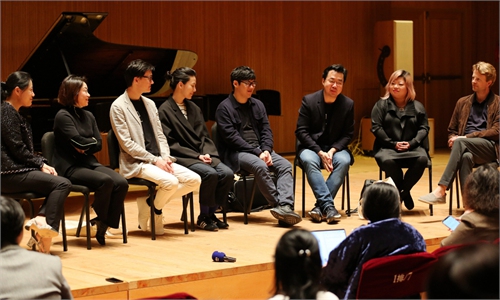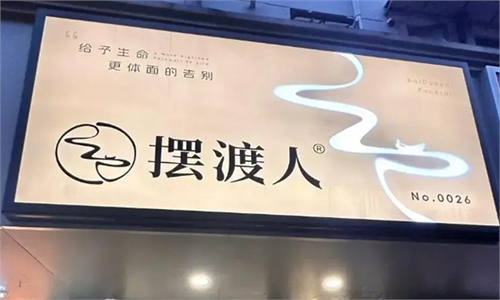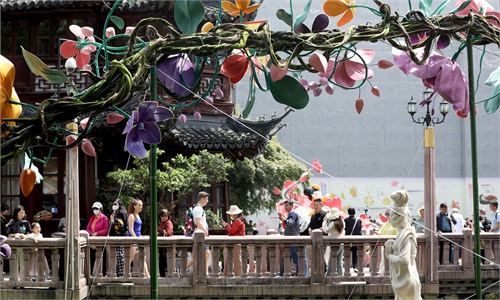ARTS / CULTURE & LEISURE
As birthplace of Communist Party of China, Shanghai utilizes its red sources in patriotic education
Red gene
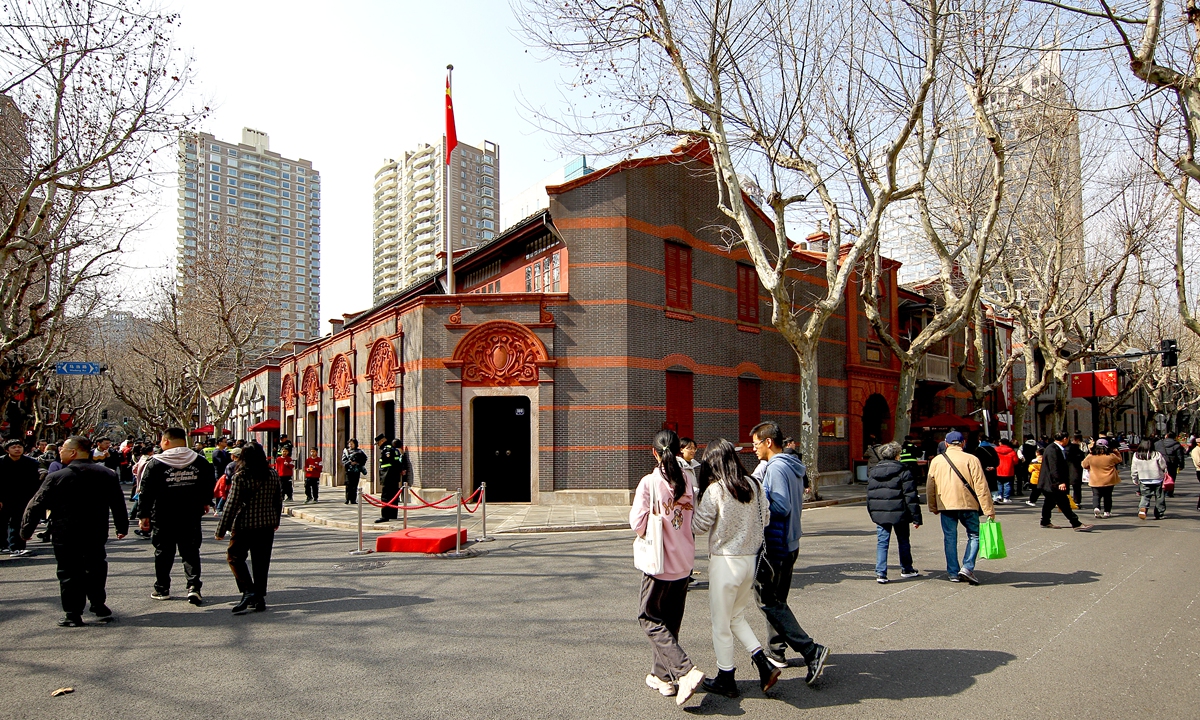
Tourists visit the Memorial Hall of the First National Congress of the CPC in Shanghai. Photo: VCG
Standing at the gate of a Shanghai-style Shikumen house, a typical Shanghai building with a courtyard and stone-framed gates, Chen Cheng and his friends wait for the memorial staff. Two days prior, they made an appointment by phone to visit the newly opened Memorial Hall of the Former Site of the Special Task Division of the Central Committee of the Communist Party of China (CPC).
Located deep in a quiet lane in downtown Shanghai, the memorial hall showcases how early Party members secretly discharged their duties to safeguard the country and its people under the threat of then Kuomintang reactionaries.
The memorial hall, a part of the Memorial Hall of the Second National Congress of the CPC, uses a special appointment system, which only allows visitors to call the memorial hall in advance, and then wait at the gate, until a staff member ushers them in.
This appointment and visiting process minimize disturbance to nearby residents, said Qian Wei, a deputy secretary of the Party branch at the Memorial Hall of the Second CPC National Congress.
"More notably, it offers an intelligence-like immersive experience that enables visitors to feel the atmosphere of underground work in those hard years," Qian told the Global Times.
Having opened to the public on Sunday, the memorial hall is an important part of Shanghai's ongoing red culture inheritance and promotion project, Qian said.
As the birthplace of the CPC, Shanghai has been making unremitting efforts to protect and utilize its rich patriotic red sources.
"The red gene nurtured by Shanghai's profound revolutionary historical tradition always flows in the blood of the city," Ma Wan, a deputy director of the academic research department at the Party history research office, the CPC Shanghai Committee, told the Global Times.
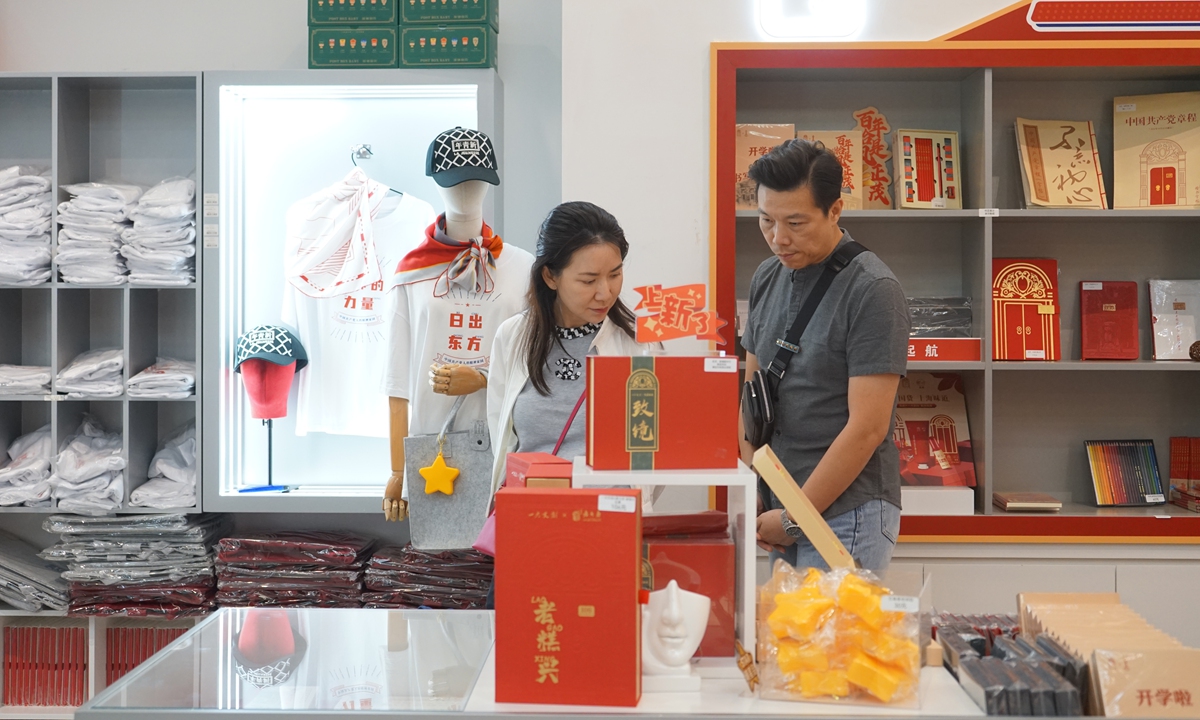
Visitors browse creative cultural products at the Memorial Hall of the First CPC National Congress in Shanghai. Photo: Chen Xia/GT
Essential role
In 1921, CPC forerunners held the Party's first National Congress in Shanghai and Jiaxing, in East China's Zhejiang Province, turning a new page in Chinese history. For decades, generations of Party members continued fighting for the liberation and well-being of the Chinese people in Shanghai, widely sowing "red seeds" across the city.
Nowadays, there are more than 600 red-themed memorial venues and historical sites in Shanghai, the People's Daily reported on Sunday. Among them, the Memorial Hall of the First National Congress of the CPC is a city landmark that attracts millions of visitors each year.
And the number of visitors keeps surging. A total of 592,615 people visited the memorial hall in the first quarter of 2024, a 51.78 percent increase year-on-year, the Global Times learned from the memorial hall on Tuesday.
To better disseminate red culture and popularize patriotic education, Shanghai started the red culture inheritance and promotion project in 2021, as part of the city's 14th Five-Year Plan (2021-25). In early 2022, it released a red resource list containing 612 historic sites, including 497 former sites of key Party and government bodies and 115 related memorial venues, which are all well preserved.
Shanghai plays an essential role in the development of the CPC. It is the Party's birthplace; the place where the original aspiration and the great founding spirit of the Party were conceived, Ma noted.
Diverse presentations
To enrich visitors' experiences, Shanghai has been diversifying the presentations of its red resources, while trying to promote red culture in more interesting and vivid ways.
On March 8, on this year's International Women's Day, visitors to the Memorial Hall of the Second CPC National Congress watched an immersive play at the site of the Shanghai Citizen Female College, which is now a part of the memorial. Dressed in the period's clothing, the memorial hall staff members at the college performed an inspiring story of the female students in the early 20th century studying hard and devoting themselves to the revolution's cause.
Telling the Party's history through immersive plays is a new approach by the memorial hall, said Qian. "This is a more friendly and acceptable way of red culture promotion," he said.
Red-themed venues make online efforts as well. The Memorial Hall of the First CPC National Congress, for instance, released a 22-minute short film in October 2023.
The film tells the story of some underground Party members in Shanghai risking their lives to fight against the enemies in the 1930s. To make the film attractive to audiences, the production team made many efforts to polish its narration and presentation, said the film's producer Xue Feng, who is also the director of the memorial hall.
"The film has a fast narrative pace, plot twists, and popular spy-drama elements. We made it suspenseful and compelling," Xue told the Global Times at a preview screening of the film in October 2023.
Citywide, the Shanghai municipal government released Hongtu (or "red journey") in June 2021, reportedly China's first online platform for red culture resources and information.
Hundreds of red tourism routes, exhibitions, videos, lectures and courses related to revolutionary history can be found on the platform. According to Shanghai-based Jiefang Daily, there are more than 5.79 million real-name registered users on the platform and 410 million views in eight months after it was launched.
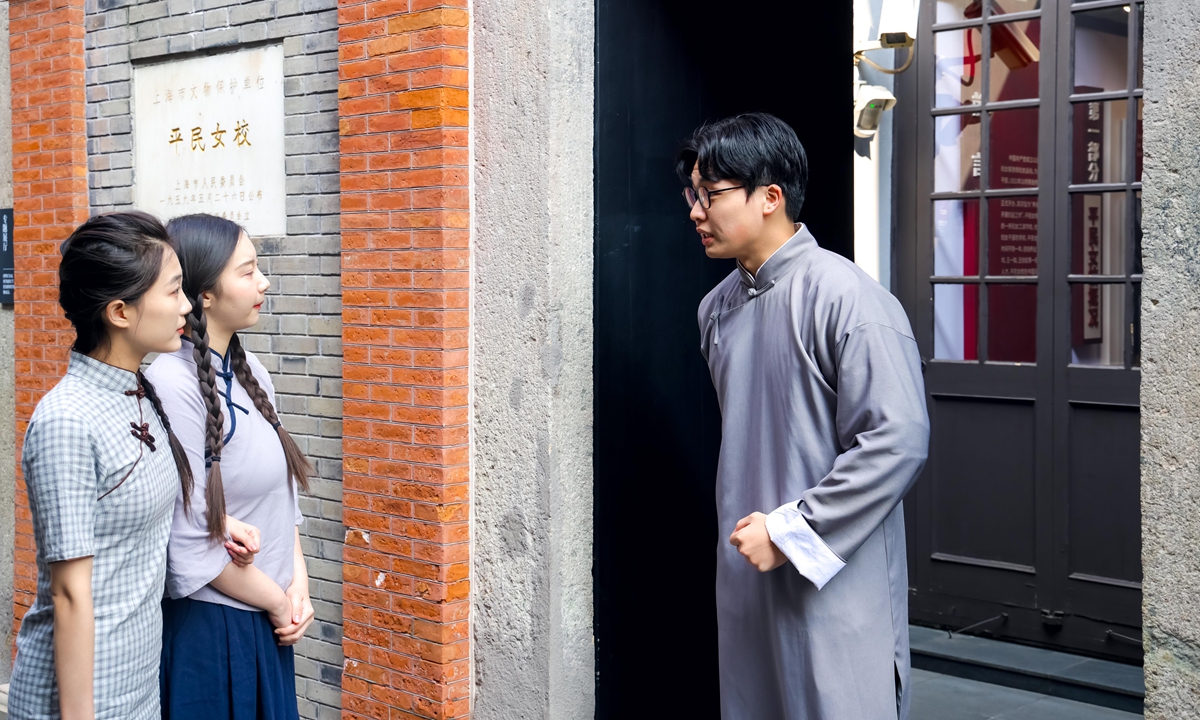
Performers act in an immersive play at the Memorial Hall of the Second CPC National Congress. Photo: Courtesy of the memorial hall
Inspiring young people
Red-themed venues are seeing an increasing number of young visitors. During the Qingming Festival holidays earlier this month, visitors under the age of 30 accounted for more than half of the spectators at many popular red-themed museums and memorials, China Central Television reported on April 7.
In recent years, Shanghai has taken further steps in exploring how to inspire young people's interest in red culture. Red-themed creative cultural products are a main aspect of its efforts, as many red venues in the city have released their own products catering to Gen Zers.
The Memorial Hall of the First CPC National Congress has designed many popular sellers that perfectly combine creativity, practicability, and red culture education function, such as a calligraphy tracing book with the Constitution of the CPC as its contents, as a gift especially for teenagers.
The memorial hall's products have both received awards at industry competitions and won praise from customers. "Education is the shared social responsibility of red tourism venues, and creative cultural products can be a characteristic highlight in our red culture education," Ruan Jun, a deputy director of the memorial hall, told the Global Times.
Apart from attractive products, some red venues in Shanghai actively cooperate with local universities and secondary schools in cohosting youth-friendly red-themed events.
Qian shared that the Memorial Hall of the Second CPC National Congress is reaching nearby middle schools to jointly design an interactive game, which will enable teenage students to naturally learn the history and spirit of the Party through a fun experience.
"It may be a role-playing murder mystery game," he said. "Young people like this."

